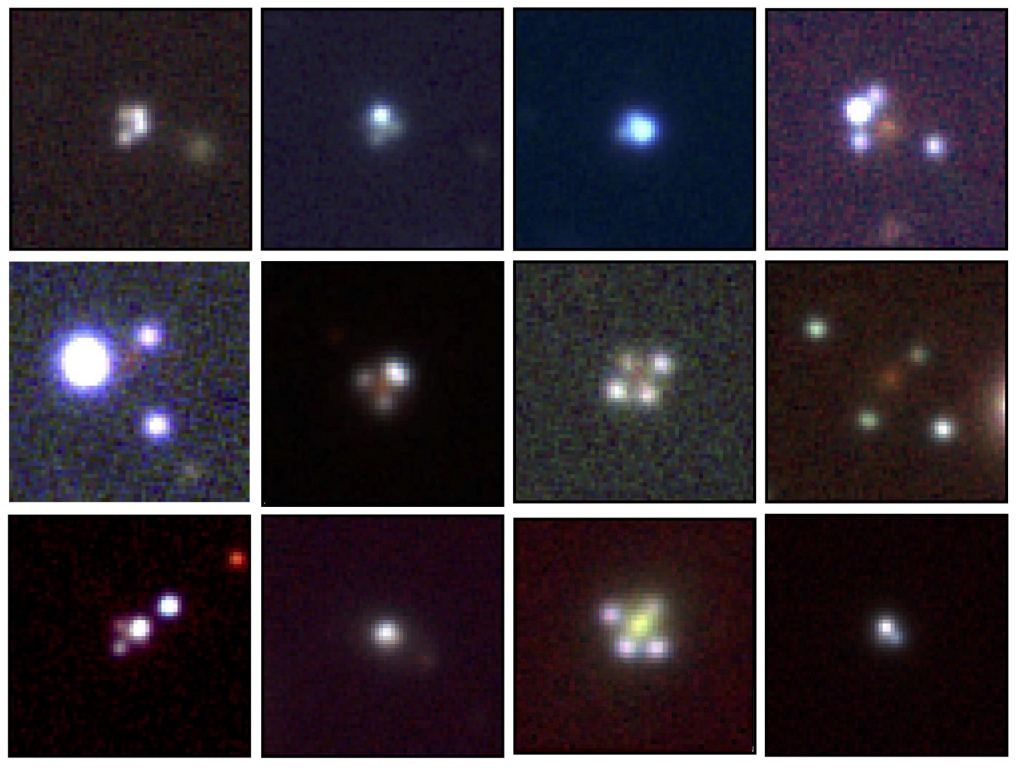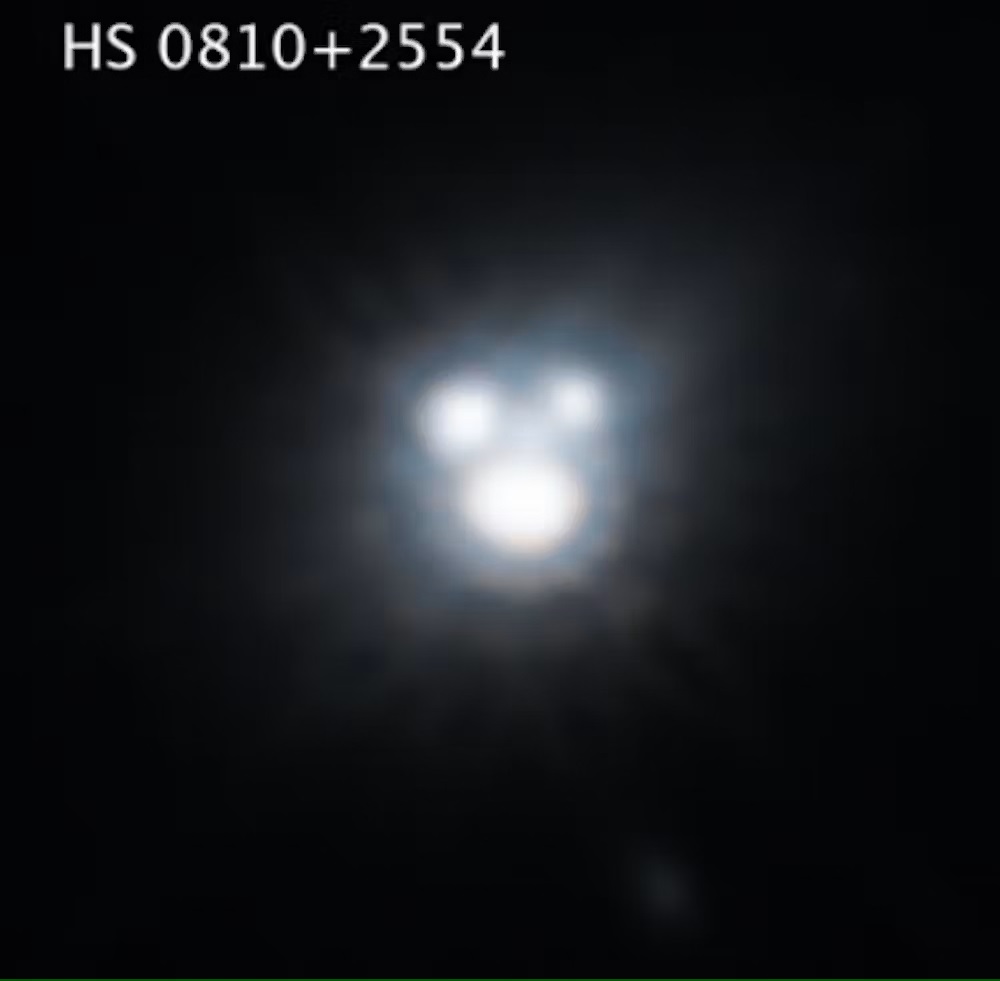According to the most widely-accepted cosmological model, the majority of the mass in our Universe (roughly 85%) consists of “Dark Matter.” This elusive, invisible mass is theorized to interact with “normal” (or “visible”) matter through gravity alone and not electromagnetic fields, neither absorbing nor emitting light (hence the name “dark”). The search for this matter is ongoing, with candidate particles including Weakly-Interacting Massive Particles (WIMPs) or ultralight bosons (axions), which are at opposite extremes of the mass scale and behave very differently (in theory).
This matter’s existence is essential for our predominant theories of gravity (General Relativity) and particle physics (The Standard Model) to make sense. Otherwise, we may need to radically rethink our theories on how gravity behaves on the largest of scales (aka. Modified Gravity). However, according to new research led by the University of Hong Kong (HKU), the study of “Einstein Rings” could bring us a step closer to understanding Dark Matter. According to their paper, the way Dark Matter alters the curvature of spacetime leaves signatures that suggest it could be made up of axions!
The research was led by Alfred Amruth, a Ph.D. physics student at the Laboratory of Space Research (LSR) at HKU. He was joined by researchers from HKU-LSR, the Donostia International Physics Center (DIPC), the Center for Frontier Science (CFS), the Research Center for the Early Universe (RESCEU), the Kavli Institute for the Physics and Mathematics of the Universe (IMPU), the Paris Centre for Cosmological Physics (CPCP), the Instituto de Física de Cantabria (CSIC), the Harvard & Smithsonian Center for Astrophysics (CfA), the National Taiwan University, and other universities and institutes. The paper that describes their findings recently appeared in the journal Nature Astronomy.
 Twelve “Einstein Crosses” imaged by the ESA’s Gaia Observatory. Credit: The GraL Collaboration
Twelve “Einstein Crosses” imaged by the ESA’s Gaia Observatory. Credit: The GraL Collaboration
Theories regarding Dark Matter emerged in the 1960s to explain the rotational curve of galaxies, which did not appear to be consistent with the amount of visible matter they contained. Over time, astronomers and cosmologists noted that the most distant galaxies in the Universe (the background galaxies) are surrounded by “haloes” of this matter. These “Dark Matter Haloes” bend and amplify light around them – a phenomenon known as gravitational lensing – that produces features known as “Einstein Rings,” “Einstein Crosses,” and other strange shapes and patterns.
This effect is predicted by Einstein’s Theory of General Relativity, where the presence of massive objects alters the curvature of spacetime. By studying how the rings or other lensed images are distorted, astrophysicists hope to learn more about the properties of Dark Matter. For their study, Amruth and his colleagues looked at several systems where gravitational lenses caused light from distant galaxies to appear in different places. In particular, they examined HS 0810+2554, a quadruply-lensed quasar that appears to us as it did about 9 billion years ago.
Using detailed modeling, they calculated how Dark Matter would distort the light from this distant quasar based on the two leading candidate particles. In addition to being at opposite extremes in terms of mass, WIMPs, and axions are also thought to behave in radically different ways. Whereas WIMPs are predicted to behave as discrete particles, axions are theorized to behave more like waves due to quantum interference. Based on these characteristics, the team tested to see which candidate produced similar lenses to the ones observed around HS 0810+2554 and other background galaxies.
While the WIMPs model did not conform to the team’s observations, the axion model accurately reproduced all the observed features of this system. By demonstrating that they can explain lensing anomalies and other astrophysical phenomena, these results could bolster the case for axions as a leading Dark Matter candidate. Although this study has not ended the debate over what form Dark Matter takes (WIMPs or axions) or whether or not it even exists, it presents new opportunities for future testing and experiment.
 Multiple images of a background image created by gravitational lensing can be seen in the system HS 0810+2554. Credit: NASA/ESA
Multiple images of a background image created by gravitational lensing can be seen in the system HS 0810+2554. Credit: NASA/ESA
These results also build on previous research that pointed toward axions as the more likely candidate for Dark Matter. This includes a study published in 2017 where a team of Mexican and British astrophysicists used the mass of dwarf spheroid galaxies (DSGs) near the Milky Way to infer the presence of axions. In 2018, a study led by the Dunlap Institute for Astronomy and Astrophysics showed how light from the Cosmic Microwave Background (CMB) could be used to probe for axion Dark Matter.
A similar study was recently conducted by the Atacama Cosmology Telescope (ACT) collaboration, who used background light from the CMB to create a new map of Dark Matter distribution. While the existence and nature of Dark Matter has been an enduring mystery, next-generation telescopes, instruments, and observations are helping astronomers narrow the search. The resulting improvement in our understanding will have immense implications for cosmology, particle physics, and our understanding of how the Universe came to be.
Further Reading: The Conversation, Nature Astronomy

